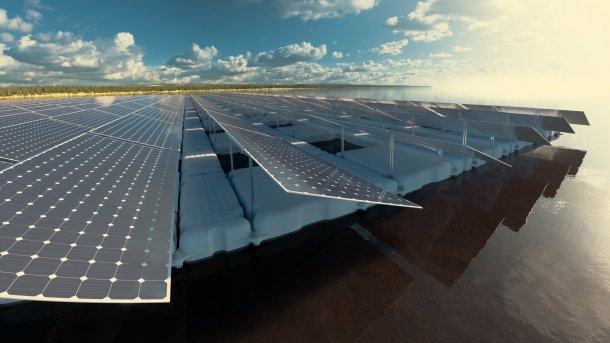Electricity for Africa: Floating solar systems instead of new reservoirs
Instead of creating new reservoirs, African countries should cover existing lakes with photovoltaics. That would have nearly only advantages.

(Bild: Politecnico di Milano)
With floating solar systems, 20 to 100 percent of the electricity that hydropower plants are to supply at all planned dams on the continent could already be generated on existing water surfaces throughout Africa. Three researchers from the Polytechnic of Milan have determined this, once again highlighting the immense potential of floating photovoltaics (FPV). Their study suggests that many of the planned dams on the African continent would not need to be built at all in order to cover the predicted energy demand. This would avoid the serious consequences for the environment and for societies that are associated with the construction of such plants.
More advantages than disadvantages
Specifically, Wyatt Arnold's group has examined the potential of the technology for the Zambezi River in South Africa. There are already several reservoirs on the river, which play an important role in power generation. Further dams are planned, but the money earmarked for this would be better invested in paying for floating solar plants. This would not only reduce the annual fluctuations in energy production, but also the risk of droughts, the team writes. This could also be extended to the entire continent. The advantages would outweigh possible disadvantages, for example for fishing or tourism, the scientists are certain.
According to Andrea Castelletti, who worked on the study, if developing countries rely on floating photovoltaics and reduce their dependence on hydropower, they can ensure a more stable power supply that would also be protected against the consequences of climate change. At the same time, however, they also admit that certain technical and social factors on the ground could make the construction of such plants more difficult. Overall, however, they advocate not only looking at individual sectors, such as hydropower, when planning dams. Only when alternatives are also examined can a truly meaningful assessment be made as to which approach is most suitable.
The work now published in the scientific journal Nature is not the first to quantify the potential benefits of floating photovoltaics in such concrete terms. A year ago, a research team from China calculated that photovoltaic systems on existing water reservoirs could cover a large proportion of the world's energy needs. More than 150 metropolitan areas could even cover their entire electricity needs. A strong expansion of floating photovoltaics would also have a number of other advantages, such as saving immense amounts of water by preventing its evaporation. At reservoirs, for example, this would also benefit the power supply.
(mho)